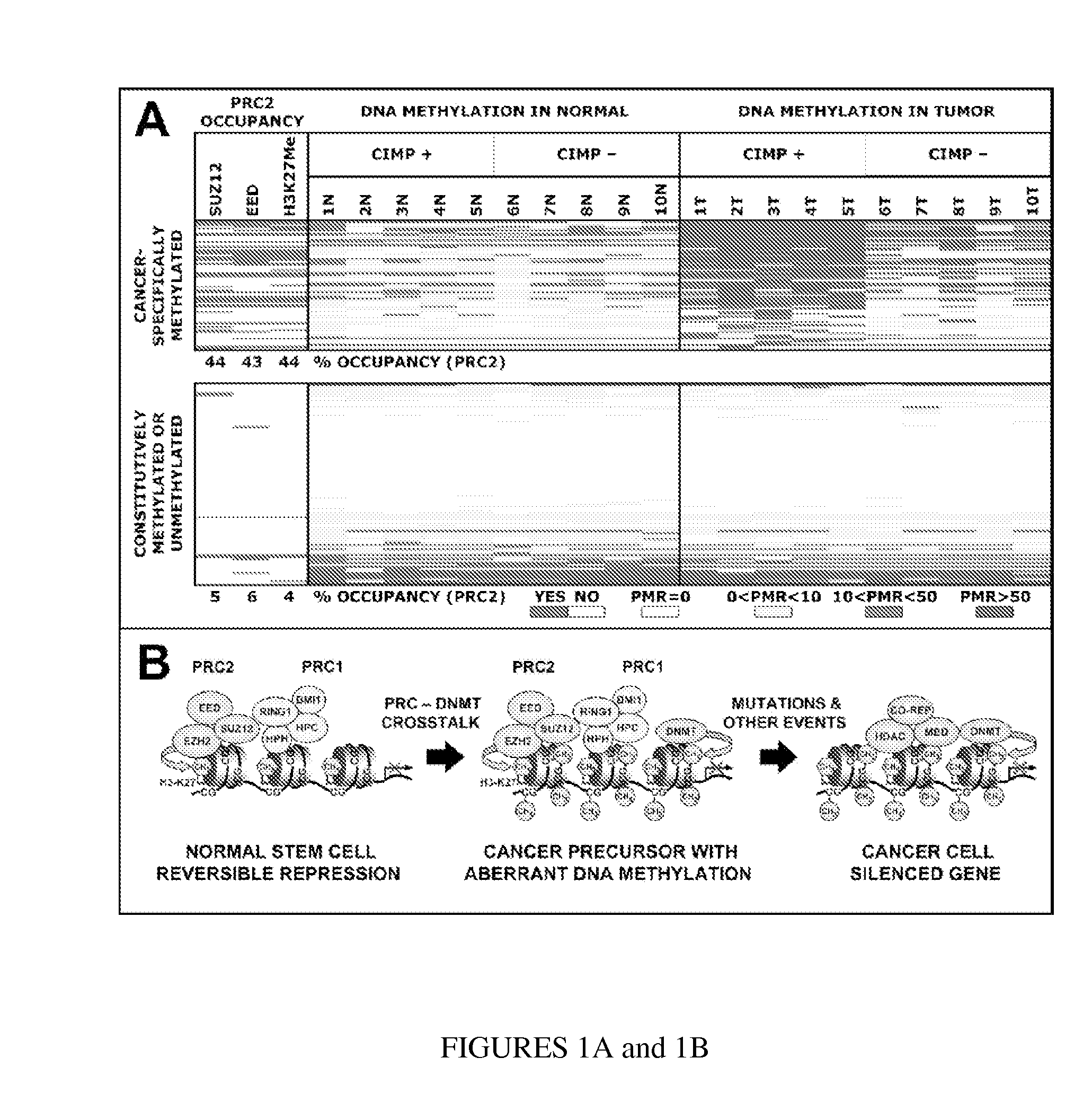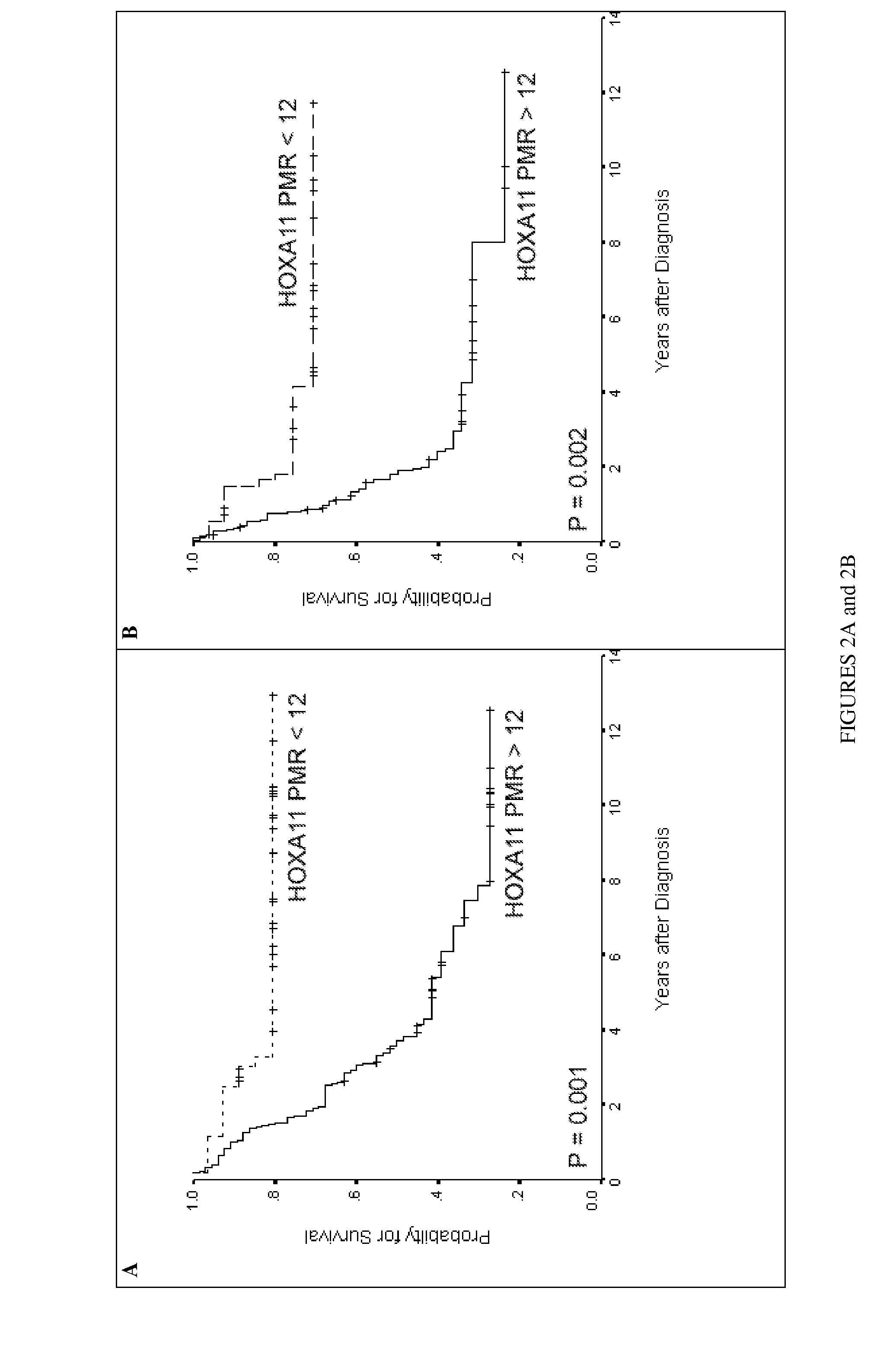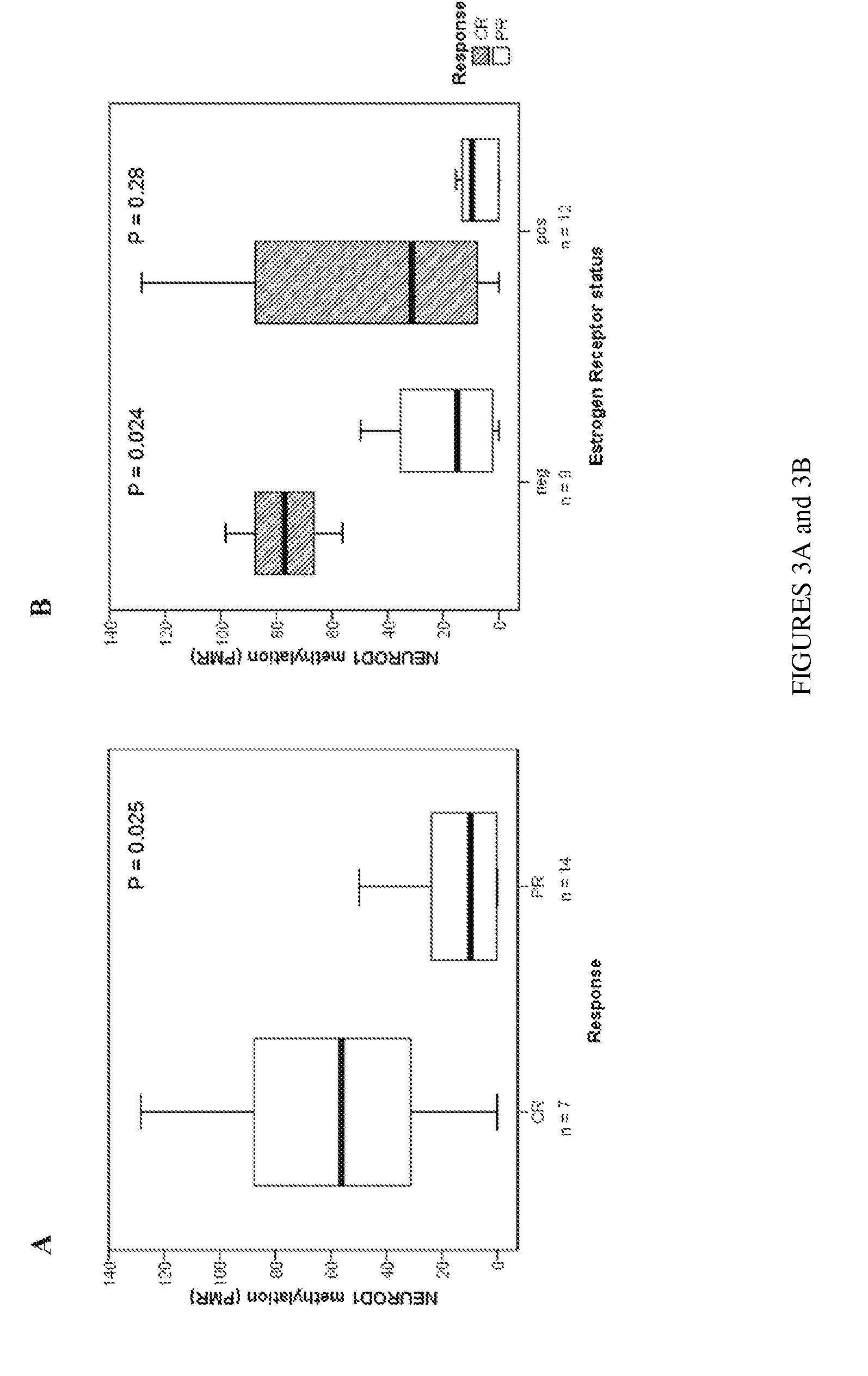DNA methylation markers based on epigenetic stem cell signatures in cancer
a technology of epigenetic stem cells and methylation markers, applied in the field of dna methylation markers based on epigenetic stem cell signatures in cancer, can solve the problems of raising the specter of aberrant or rogue cells, unable to obtain firm empirical evidence, and no tool is available to sufficiently predict or monitor the efficacy of neoadjuvant or adjuvant systemic chemotherapy. , to achieve the effect of poor outcom
- Summary
- Abstract
- Description
- Claims
- Application Information
AI Technical Summary
Benefits of technology
Problems solved by technology
Method used
Image
Examples
example 1
Methods
Colorectal Cancer Methods
[0048]Colorectal cancer DNA Methylation Data and PRC2 Occupancy. The full methods for the colorectal cancer data have been published previously (D. J. Weisenberger et al., Nat Genet. 38:7, 2006; incorporated by reference herein in its entirety).
Methods Applicable to the Previously Unpublished Data for Ovarian Cancer, Breast Cancer, and CD34 Positive Hematopoietic Cells
Patients:
[0049]Hematopoietic related Patients. CD34 pos. cells isolated from stem cell apheresis collections from nine women were analyzed. The samples were collected during treatment at the Division of Hematology and Oncology, Innsbruck Medical University, Austria. All patients signed informed consent prior to apheresis.
[0050]Ovarian and breast related patients. Ovarian tissues from 40 patients and breast specimens from 30 patients were collected during surgery at the Department of Obstetrics and Gynecology of the Innsbruck Medical University, Austria in compliance with and approved by ...
example 2
Colorectal Cancer DNA Methylation Data and PRC2 Occupancy were Analyzed
[0059]Table 1 lists the 177 MethyLight™ reactions from Weisenberger et al. (2006) for which the PRC2 occupancy could be established from the data published in Lee et al. (2006). Of the 177 reactions, 164 (93%) are located within 1 kb of the transcription start site. Of the PRC2 targets, 95% are located within 1 kb of the transcription start site. See Table 5 herein below for primer and probe details.
TABLE 1Colorectal Cancer DNA Methylation Data and PRC2 OccupancyDNA METHYLATIONPRC2 OCCUPANCYMEANMEANHGNCREACTIONPRC2PMRPMRPMR(T) −SYMBOLIDSUZ12EEDH3K27MeTOTAL(N)(T)PMR(N)CANCER-SPECIFICALLY METHYLATED GENESGATA5HB-326YESYESYES335514479.00SFRP5HB-282YESYESYES33446443.45IGF2HB-319YESYESNO22368366.11TWIST1HB-047NOYESYES29294284.89EBF3HB-229YESNOYES213287273.78HIC1HB-168NOYESYES290356266.16SFRP2HB-280NONONO07187179.71SFRP1HB-201YESYESYES329177148.52NEUROD2HB-260YESYESYES326173147.11SCGB3A1HB-194NONONO07143135.44RUNX3HB-1...
example 3
Ovarian Cancer DNA Methylation Data and Stem Cell PRC2 Occupancy were Analyzed
[0060]Table 2 lists DNA methylation values (PMR) of 35 genes analyzed in 18 normal ovaries and 22 ovarian cancers. These genes were selected for their potential utility as cancer-specific DNA methylation markers without prior knowledge of their PRC2 occupancy status. P-values of genes that demonstrate significant higher DNA methylation levels (Mann Whitney U test) in cancer compared to normal ovaries are shaded and referred as to “cancer genes”. Applicants defined “Stem cell genes” as genes which are occupied with at least two of the three components (SUZ12, EED and H3K27me3) in human embryonic stem cells. Nine genes demonstrated higher frequencies of densely methylated alleles (as reflected in the listed values for PMR) in cancer tissues compared to normal ovaries. 56% ( 5 / 9) of these “cancer genes” were “stem cell genes”, whereas only 15% ( 4 / 26) of the “non-cancer genes” were “stem cell genes” (P=0.03)....
PUM
 Login to View More
Login to View More Abstract
Description
Claims
Application Information
 Login to View More
Login to View More - R&D
- Intellectual Property
- Life Sciences
- Materials
- Tech Scout
- Unparalleled Data Quality
- Higher Quality Content
- 60% Fewer Hallucinations
Browse by: Latest US Patents, China's latest patents, Technical Efficacy Thesaurus, Application Domain, Technology Topic, Popular Technical Reports.
© 2025 PatSnap. All rights reserved.Legal|Privacy policy|Modern Slavery Act Transparency Statement|Sitemap|About US| Contact US: help@patsnap.com



